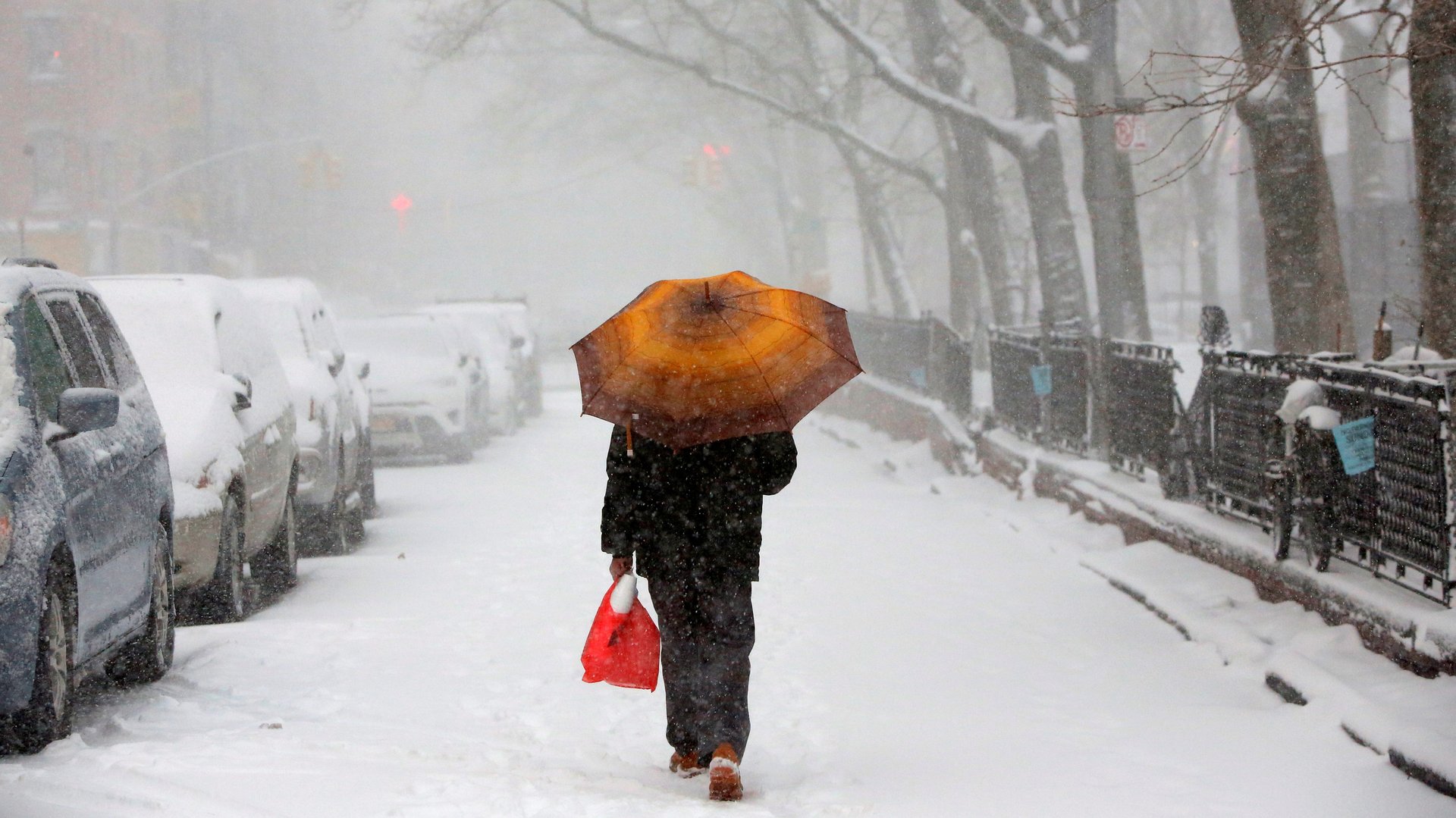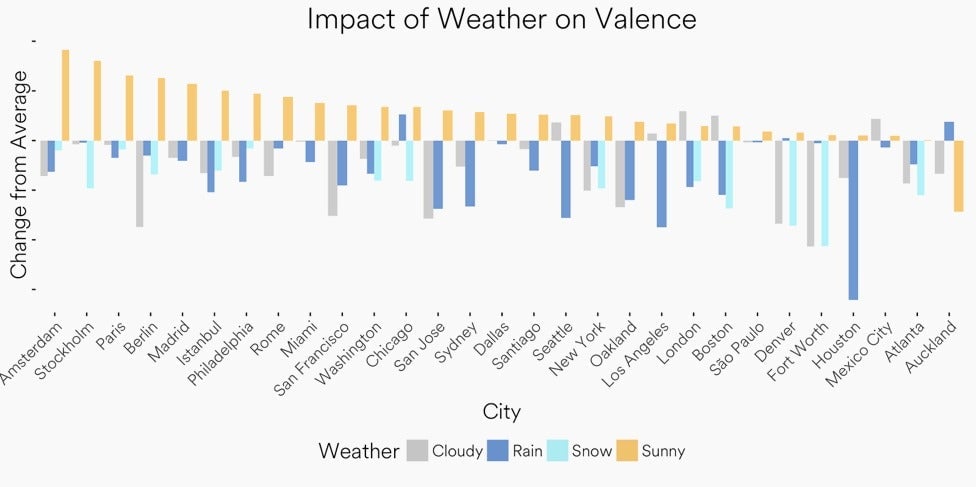Spotify analyzed a year’s worth of data to create your perfect playlist for snow, sun, and rain
The weather, it turns out, has a direct impact on your playlist. But it’s not always what you’d expect.


The weather, it turns out, has a direct impact on your playlist. But it’s not always what you’d expect.
Spotify was curious about how weather conditions like sun, snow, rain, and clouds affect the music choices of its users (worldwide, that’s 40 million paid subscribers as of September, and more than 100 million total users). So it partnered with weather service Accuweather to examine how the sonic attributes of the songs people listen to changed according to the weather in select cities between November 2015 and November 2016. The company found there was “definitely a connection between what’s in the skies and what’s on users’ play queues.” Spotify then used the songs that got disproportionate play during those weather conditions to create playlists for each city.
The lists include a wide variety of music. New Yorkers who are getting hammered with snow today, for instance, can get served up songs including ”Another Lonely Night” by Adam Lambert, “The Most” by Rich Homie Quan, and “Non-Stop Groove 2012” by D.J. Ace & Much Finesse. In hot, sunny Sydney, the playlist might look quite different. You can find your city and weather playlists at spotify.com/climatune.
For its analysis of how the weather changed music played in different cities, Spotify focused on eight audio attributes that suggest a sonic mood: acousticness, danceability, energy, instrumentalness, organism, runnability, valence, and bounciness. Acousticness refers to sounds such as acoustic guitar versus electronic noises. Organism is how “human” a track sounds, using a live drummer rather than a drum machine for example. Valence is how happy or sad a song feels.

There were some expected correlations—people generally listen to happier music when it’s sunny, for example—but also some interesting outliers. Leeds in the UK was happiest on cloudy days, while Liverpool and Manchester played happier music in the snow, “unlike almost every other major city,” Spotify noted. In the UK generally, in fact, cloudy days saw more danceable music than sunny days.
The weather’s effect on specific musical choices varies a good deal. Romans liked danceable music when it was sunny, but Dallas listeners had the opposite reaction. Snow caused spikes in instrumental music with limited vocals in Denver, Atlanta, and Fort Worth, Texas; while Londoners opted for less instrumental options. In São Paulo, the Paulistas apparently like a track you can run to when it’s soggy outside, and Atlanta gets bouncy in the snow.
Overall, Houston was the city most affected by rain. Its musical choices registered big drops in runnability, bounciness, and danceability on those days, and a 121% increase in acousticness. Chicagoans, meanwhile, were among the few who opted for more energetic music when it was wet out.
Next time you see someone with their headphones in, have a look at the weather. Depending on where you are, there’s a good chance it will give you an idea of what they’re listening to.